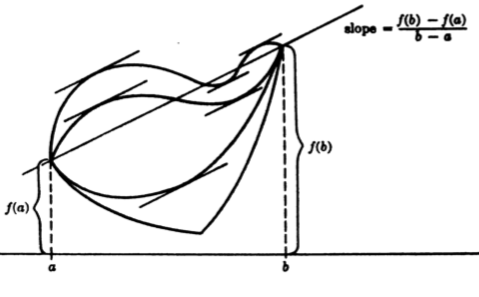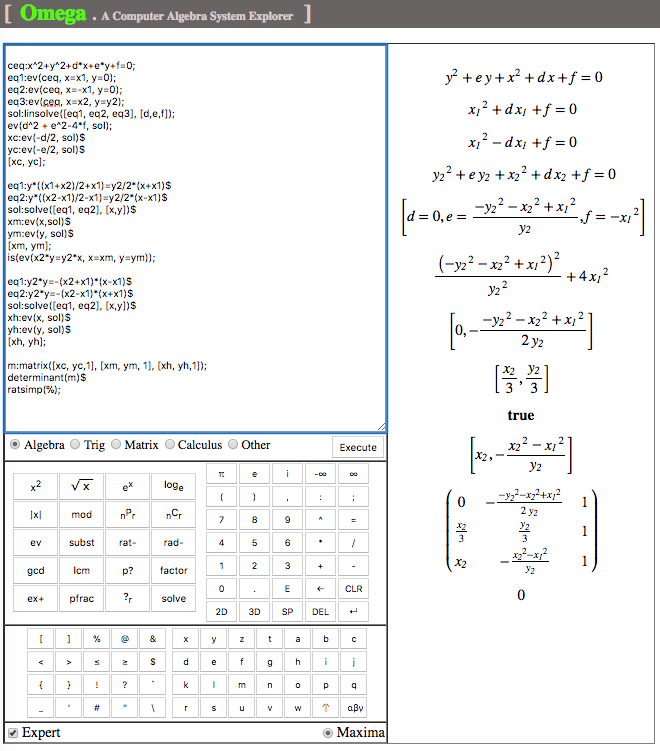
Our sprint starts with Lagrange’s Mean-Value theorem which states:
A function is
(1) continous on closed interval
(2) differentiable on open interval
.
Let’s prove it.
The area of a triangle with vortices and
is the absolute value of
where (See “Had Heron Known Analytic Geometry“)
Let
,
Since is differentiable, we have
.
Clearly,
Therefore, by Rolle’s Theorem (See “Rolle’s theorem”) , i.e.,
or
.
The geometric meaning of Lagrange’s Mean-Value theorem is illustrated for several functions in Fig. 1. It shows that the graph of a differentiable function has at least one tangent line parallel to the cord connecting and
.

Fig. 1
The bottom curve falsifies the theorem due to its missing differentiability at one point.
Following Lagrange’s Mean-Value theorem are two corollaries. We have encountered and accepted the first one without proper proof in the past (See “Inching towards Definite Integral“)
Let’s state and prove them now.
Corollary 1. A function on an open interval
has derivative zero at each point
, a constant.
It is true due to the fact that is both continous on
and differentiable on
. By Lagrange’s Mean-Value theorem,
. Since
, We have
. i.e.,
. Hence
, a constant on
.
Corollary 2. Two functions, and
have the same derivative at each point on an open interval
, a constant.
For . By corollary 1,
, a constant.
Next, we define a set as follows:
i.e.,
is a set of function such that
for all
‘s.
is certainly not empty for we have proved that
by showing
(See “Inching towards Definite Integral“). It follows that
,
By Corollary 2,
.
Let , we have
.
Hence
or
.
Let’s summarize the result of our exploration in a theorem:
On an open interval containing
, a function
is differentiable and,
,
This is FTC, The Fundamental Theorem of Calculus.
Let , (1) becomes the Newton-Leibniz formula
,
our old friend for evaluating (See “Inching towards Definite Integral“)


